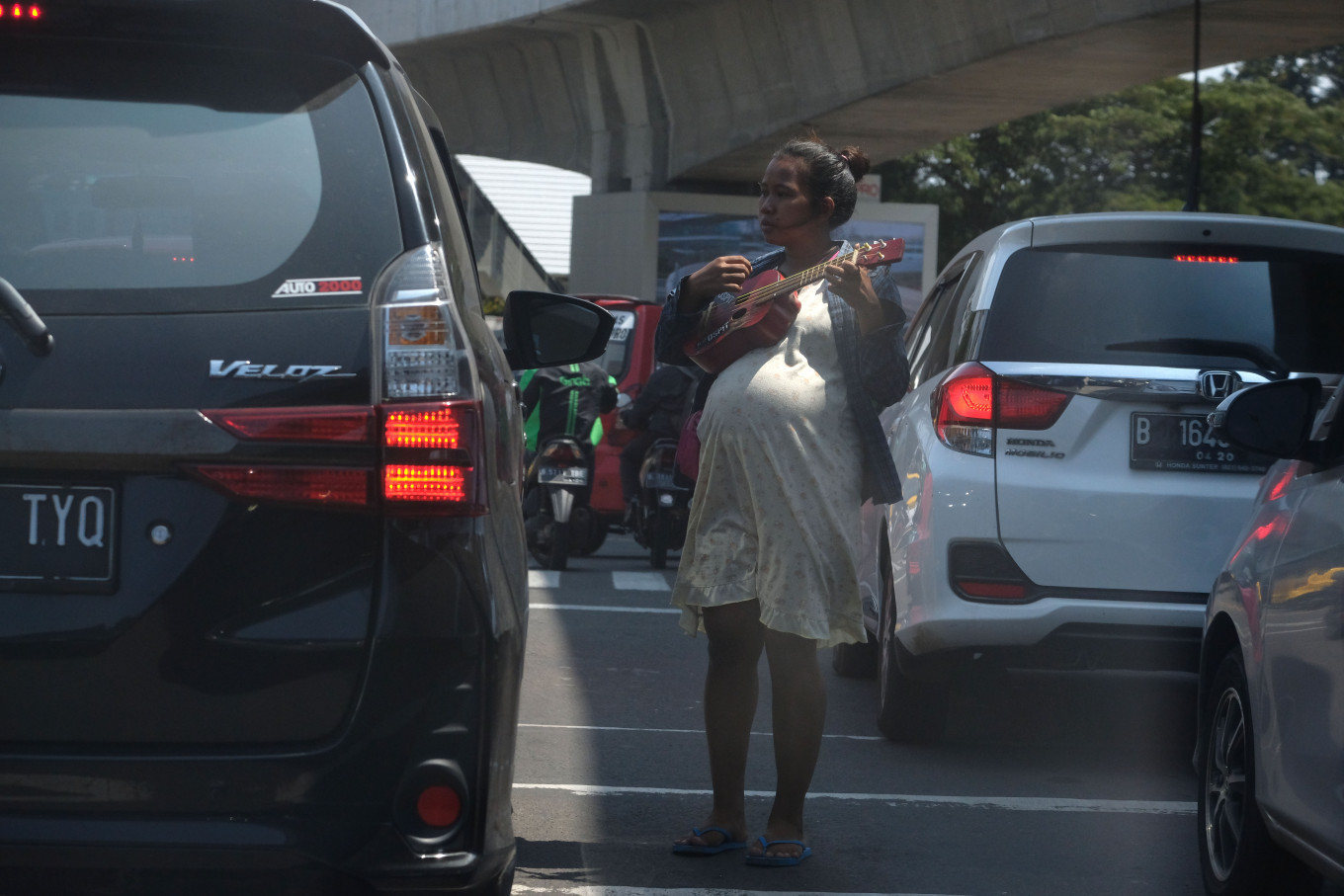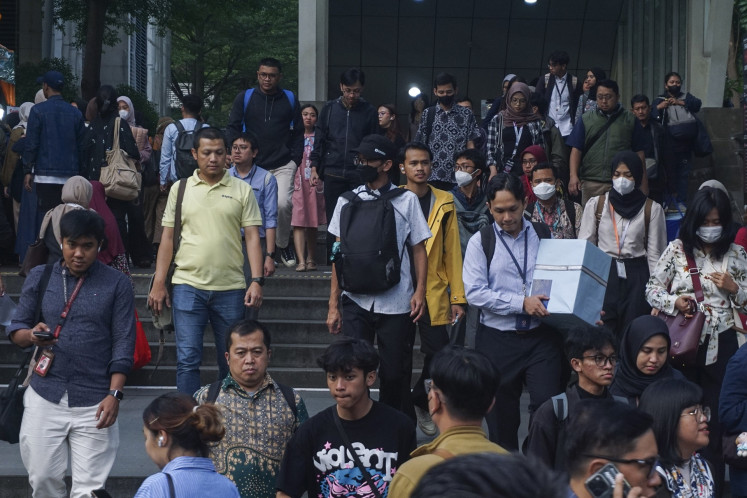Popular Reads
Top Results
Can't find what you're looking for?
View all search resultsPopular Reads
Top Results
Can't find what you're looking for?
View all search resultsPoverty elimination back to square one as COVID-19 wipes past progress: Experts
A projected 8.5 million people will fall into poverty this year as a result of the COVID-19 pandemic, according to a SMERU report.
Change text size
Gift Premium Articles
to Anyone
T
he government might have a prolonged struggle with eradicating poverty in the country as the months-long COVID-19 pandemic might set progress back to square one, a report by SMERU Research Institute predicts.
A projected 8.5 million people will fall into poverty this year as a result of the COVID-19 pandemic, according to the report. In the worst-case scenario, Southeast Asia’s biggest economy will grow by just 1 percent in 2020.
The prediction means that the number of poor people will surge to 33.24 million or 12.37 percent of Indonesia’s total population, a figure last seen in 2009 at 32.5 million people before it gradually declined over the years.
The projected increase will likely wipe out the country’s poverty eradication progress, which saw in September 2018 the country succeeded in cutting its poverty rate to a single-digit level of 9.6 percent for the first time in history.
Statistics Indonesia (BPS) data from September 2019 showed that 24.79 million Indonesians lived in poverty, equivalent to 9.22 percent of the total population.
“The Indonesian economy needs to recover [after the pandemic], that’s for sure, but efforts to reduce the country’s poverty rate has reversed by 10 years, where the poverty level is at 12 percent [of the total population]. All of the difficult steps that have been taken will then have to be redone to return to the 9.22 percent level,” SMERU researcher Ridho Al Izzati told The Jakarta Post.
So far, the government has been distributing cash and non-cash assistance as part of its efforts to eradicate poverty in remote and urban areas, with initiatives like the staple food card and family hope (PKH) program.
The research notes that at the most optimistic scenario where the country’s GDP grows by 4.2 percent, there will still be at least 1.3 million additional poor people due to the pandemic, bringing the percentage to 9.7 percent of the population.
Due to the harsh impacts of COVID-19 on the economy, the government cut down its GDP growth estimate to 2.3 percent this year, the lowest in 21 years from the initial estimate of 5.3 percent. In the worst-case scenario, the country’s GDP growth may plunge to 0.4 percent.
SMERU projects that with the pandemic causing a decline in economic activities, there will be a supply and demand shock that will affect economic growth.
Ridho notes that a declining income as a result of COVID-19 is the most severe impact on poor people or those close to poverty and vulnerable groups, as most poor people work in the informal sectors, relying on daily incomes for a living.
The government initially projected that an additional 1.1 million people might fall into poverty in a bad-case scenario following the pandemic, while in the worst-case scenario, the figure might balloon to 3.8 million people. It also predicted that 2.9 million to 5.2 million people might be furloughed by the end of the pandemic because of economic shocks.
As of April 13, about 2.8 million people have lost their jobs, according to Manpower Ministry and the Workers Social Security Agency (BPJS Ketenagakerjaan) data.
In order to cushion the blow on society’s most vulnerable, the government has set aside Rp 110 trillion (US$7 billion) in social safety net programs, which includes cash transfers, staple food relief, a boost in the existing family hope program (PKH), free electricity and the preemployment card program to help those who have lost their jobs.
SMERU senior research fellow Asep Suryahadi said the surging number of poor people would definitely affect the country’s economic recovery post-pandemic.
“We cannot hope for much help from the outside [foreign countries] for recovery. The jury’s still out on whether a quick recovery will happen or not,” he said.
Asep suggested that the government address the supply and demand side of the economy, meaning businesses and consumers. While the government has addressed the demand shocks through various social protection programs, he urged the government to help the companies affected by the pandemic, which will subsequently help the poor get back on their feet once the health crisis is over.
“I think the additional poor people are mostly people who have lost jobs. […] They have a productive capacity; they’re not chronically poor. Once jobs are available, they will be able to work again and hopefully move out of poverty,” he said.
Meanwhile, economist and Perbanas Institute lecturer Piter Abdullah criticized the government’s initial boast about its poverty reduction progress in the first place.
“The success is not solid enough. What happened was just the movement of [people] being poor to almost poor and prone to poor, so not really moving from being poor to being middle class,” he said.
The lack of structural change in the economic movement caused the vulnerable poor to be prone to economic shocks, Piter added.
“When there is an [economic] shock, like now, they go back to being poor. Once they lose their earnings or when their business is disrupted, they go back to being in the poor group, especially those in the informal sector and those losing their jobs in the informal sector,” he said.
Enny Sri Hartati, executive director of the Institute for Development of Economics and Finance (INDEF), said the country’s economic recovery largely depended on the government’s COVID-19 handling.
A pandemic that lasts more than two months might push people into poverty, she added.
“It’s important that during the crisis, other than maintaining the people’s purchasing power through social protection, [the government] must ensure that the productive sector does not stop operating. If the [productive sector] collapses, the recovery after the pandemic will be difficult, with a high unemployment rate.”










